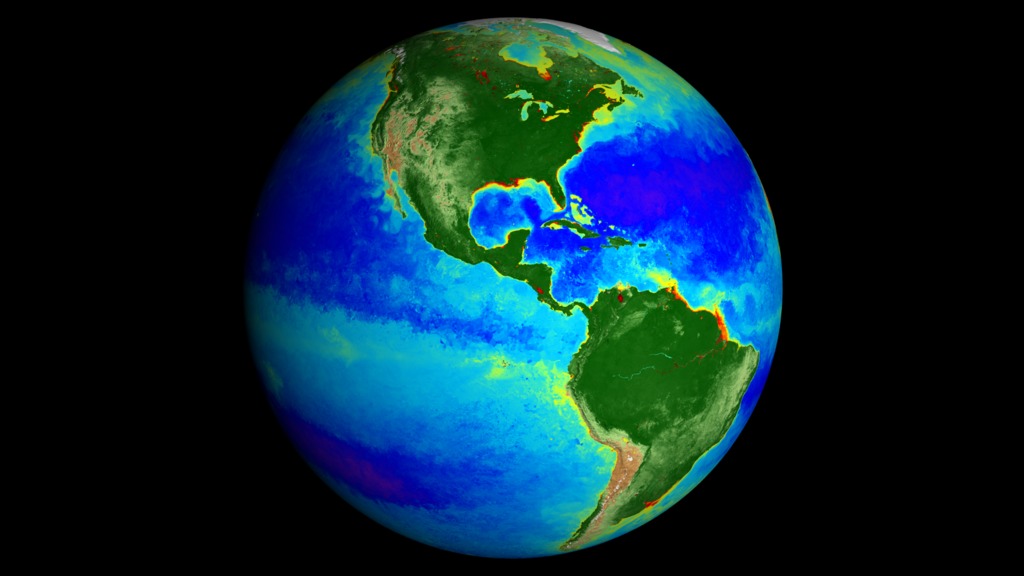Earth: Our Living Planet
| Credit | NASA/Goddard Space Flight Center, The SeaWiFS Project and GeoEye, Scientific Visualization Studio |
|---|---|
| Language |
|
In Earth’s Northern Hemisphere, ecosystems wake in the spring, taking in carbon dioxide and exhaling oxygen as they sprout leaves — and a fleet of Earth-observing satellites tracks the spread of the newly-green vegetation. Meanwhile, in the oceans, microscopic plants drift through the sunlit surface waters and bloom into billions of carbon dioxide-absorbing organisms — and light-detecting instruments on satellites map the swirls of their color.
By monitoring the color of reflected light via satellite, scientists can determine how successfully plant life is photosynthesizing. A measurement of photosynthesis is essentially a measurement of successful growth, and growth means successful use of ambient carbon.
This data visualization represents twenty years' worth of data taken primarily by SeaStar/SeaWiFS, Aqua/MODIS, and Suomi NPP/VIIRS satellite sensors, showing the abundance of life both on land and in the sea.
In the ocean, dark blue to violet represents warmer areas where there is little life due to lack of nutrients, and greens and reds represent cooler nutrient-rich areas. The nutrient-rich areas include coastal regions where cold water rises from the sea floor bringing nutrients along and areas at the mouths of rivers where the rivers have brought nutrients into the ocean from the land.
On land, green represents areas of abundant plant life, such as forests and grasslands, while tan and white represent areas where plant life is sparse or non-existent, such as the deserts in Africa and the Middle East and snow-cover and ice at the poles.



